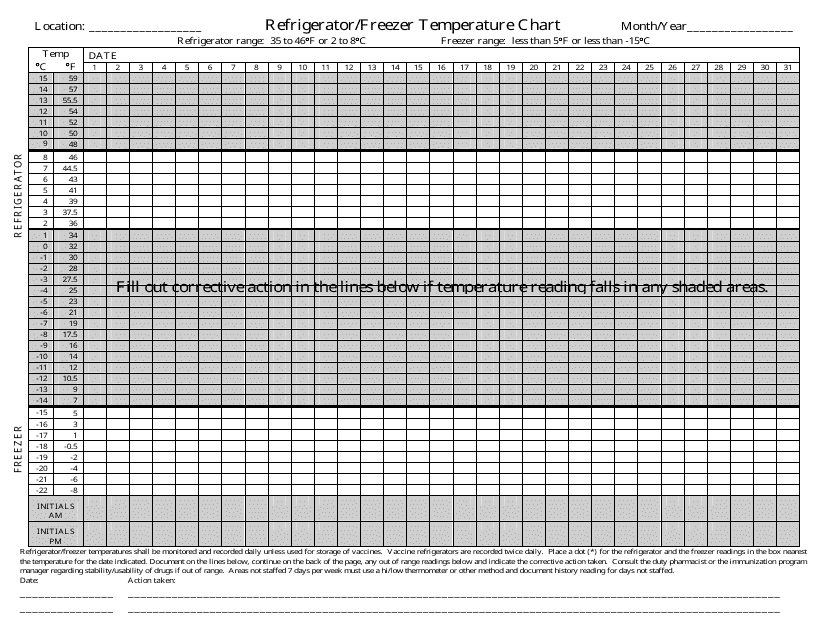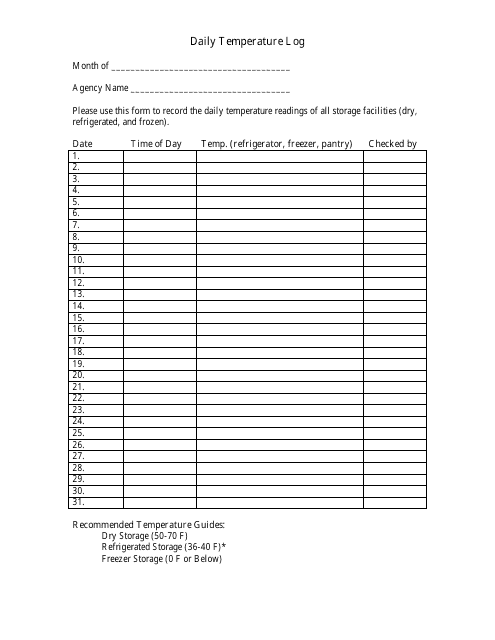Printable Refrigerator and Freezer Temperature Log Sheets
Refrigerator and Freezer Temperature Log Templates
A Freezer and Refrigerator Temperature Log is an important form that helps to document daily monitoring of temperature in freezers and refrigerators. It is proof that the temperature in your fridges and freezers is checked every day, fluctuates within the prescribed limits, and the facility meets storage requirements. Fill out a separate form for each month and for every freezer or fridge in your facility. Keep the completed temperature log forms with your documentation for a minimum of 3 years, unless the local law requires maintaining them longer.
A Freezer Temperature Log is often used as a Refrigerator Temperature Log and vice versa. This document is widely applied in the food, logistics, and healthcare industry. There is a variety of different templates made to conveniently document temperature checks, including daily refrigerator log forms, temperature charts that can be used for joint documentation of the temperature in refrigerator and freezer, and others.
How to Measure Temperature in a Refrigerator?
In most cases, the temperature in a refrigerator or freezer should be checked and entered on the corresponding form once a day. However, if the refrigerator is used to store vaccines, the temperature must be checked and recorded twice a day.
Special vaccine Refrigerator Temperature Logs are available to facilitate the documentation in medical facilities. These templates often contain temperature requirements that should be met for the vaccine to keep its properties, and the steps that should be taken in case you find out the temperature in the refrigerator crosses the prescribed limits.
Use refrigerator thermometers specially created to be rustproof and accurate at low temperatures for precise measurements. To provide the correct temperature, a thermometer must stay in a fridge or freezer for 5 to 8 hours minimum. To simplify your daily measurements, you can keep it in a refrigerator or a freezer permanently.
Documents:
2
This document provides a template for monitoring and recording the temperatures of vaccine refrigerators and freezers. It helps ensure that vaccines are stored at the correct temperature to maintain their effectiveness.
This simple one-page form is used for recording everyday temperature in storage facilities. This document is an important part of the documentation accepted in the food, healthcare, and logistics industry.


